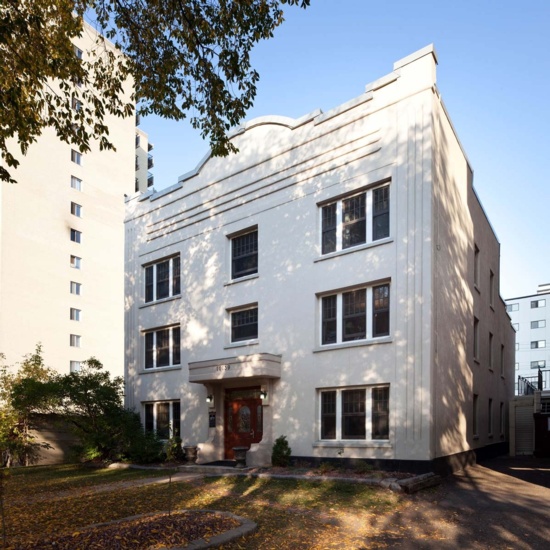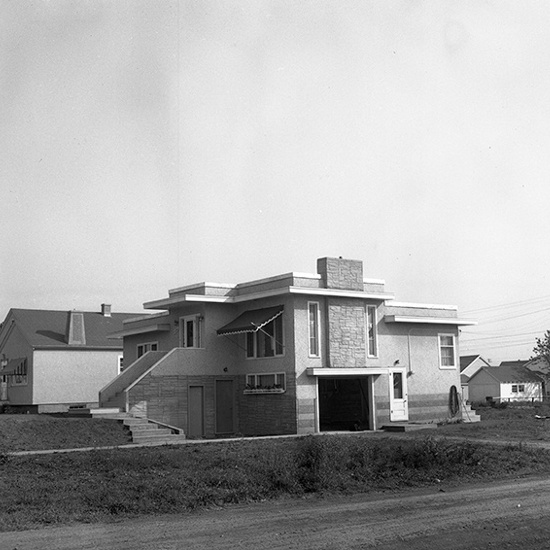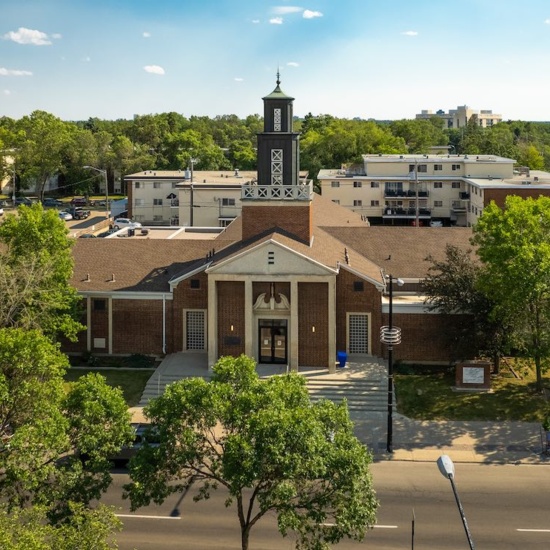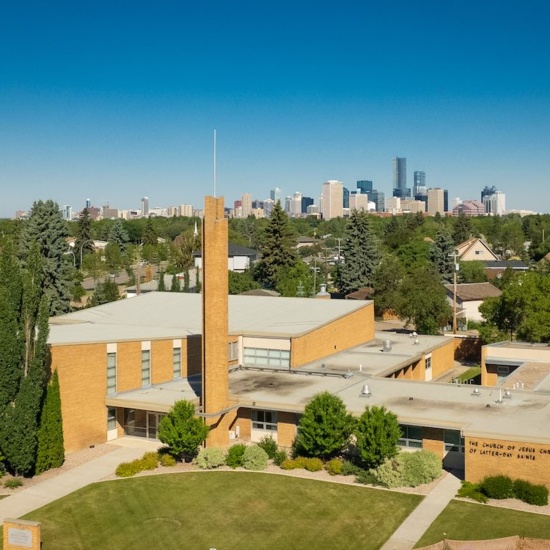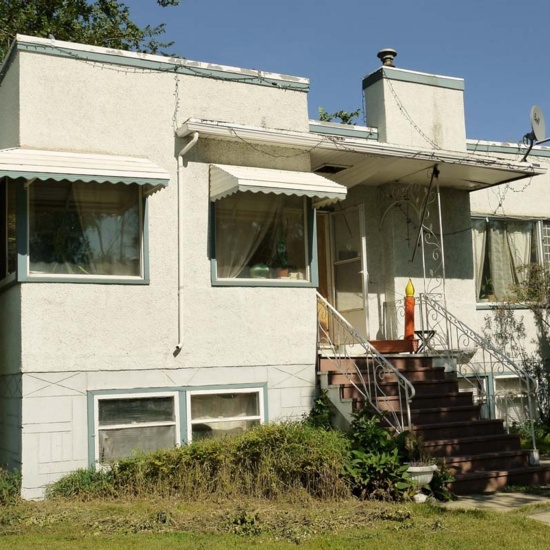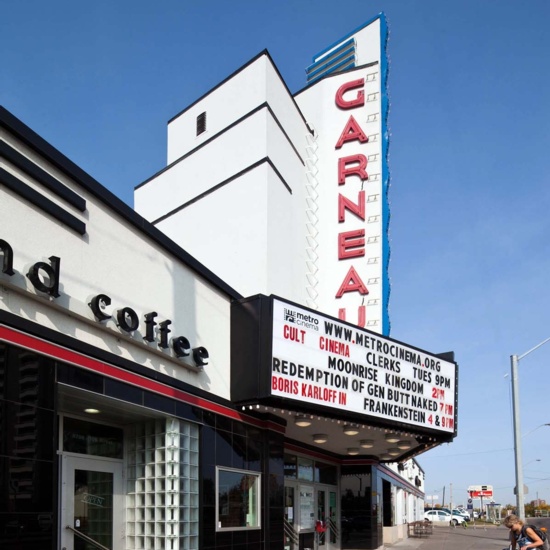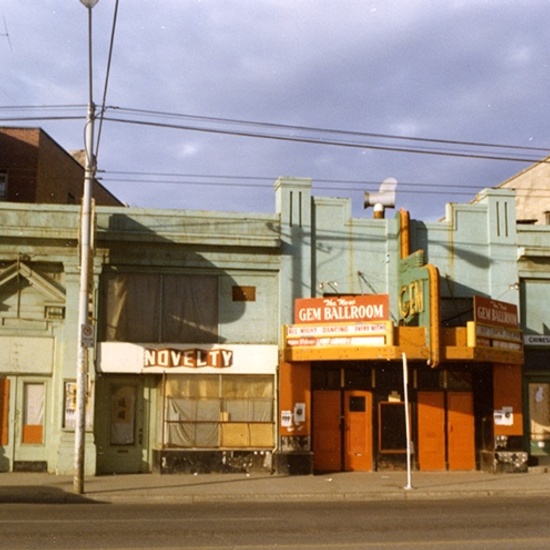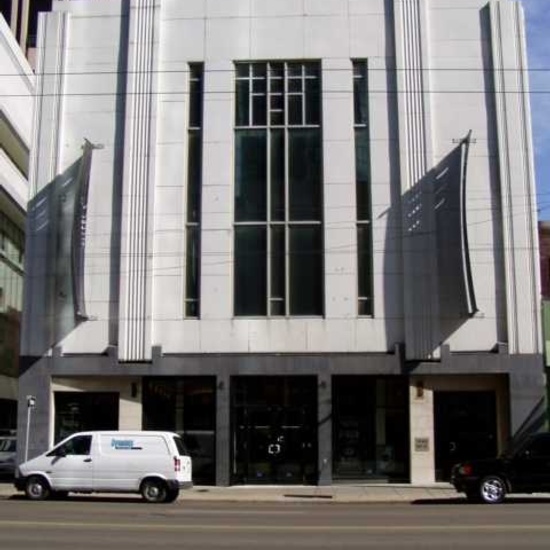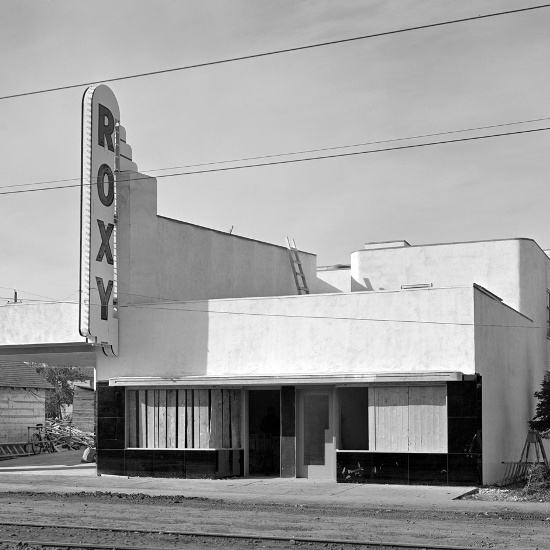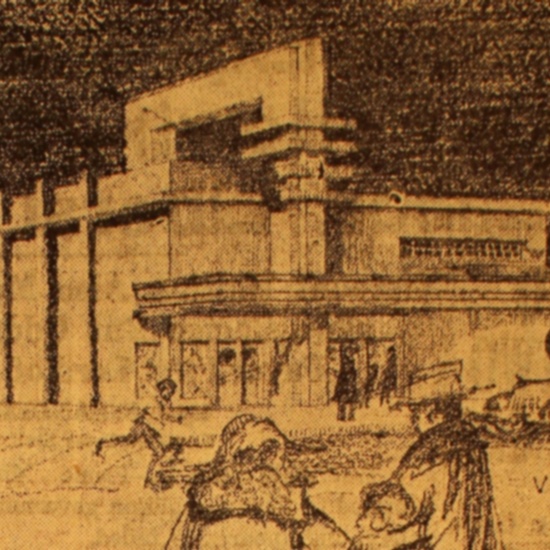Moderne
Moderne architecture was popular in Edmonton in the 1930s and 1940s and was an adaptation of the Art Deco style.
Moderne architecture was popular in Edmonton in the 1930s and 1940s and was an adaptation of the Art Deco style.
Popular from 1925 through to the 1950s, Moderne followed and was influenced by Art Deco. Moderne differs from its predecessor as it is simpler with less ornamentation. Combining both traditional and modern ideas, decorative details were kept to a minimum, relying instead on strong horizontal elements such as flat roofs or railings. Moderne was used more commonly for residential buildings while Art Deco was used for commercial structures.
Characteristics
- Asymmetrical
- Flat roof
- Flat, untextured walls in stucco or concrete
- Simple geometric shapes
- Little ornamentation
- Rounded corners
- Wrap-around windows, often using glass block
- Metal framed windows arranged in horizontal bands
- Decorative elements in aluminum and steel often applied in horizontal banding (called speedlines) as well as railings, and balusters
Details
Structures
Balfour Manor
Brodeur House
Edmonton Branch Chapel
Edmonton Stake Centre
Frost Residence
Garneau Theatre
Gem Theatre
Hudson's Bay Company Building
Moser and Ryder Block
Roxy Theatre
Varscona Theatre
Architects
William G. Blakey
Richard Palin Blakey
Joseph N. Côté
Gordon Wynn
Peter Rule
John Rule
Herbert Alton Magoon
Dewar, Stevenson, and Stanley
William F. Thomas
Unknown
Rick Wilkin
Blakey Blakey & Ascher
Cannon & Mullen
Rule Wynn Rule
Neighbourhoods
Boyle Street
Downtown
Garneau
Oliver
Parkdale
Queen Alexandra
Queen Mary Park
Strathearn
Westmount
Character Defining Elements
Balustrade, Black granite structure, Brick structure, Cantilever projections, Coping, Corner windows, Cornice, Decorative brick, Decorative insets, Dentil, Flat roof, Flush eaves, Glass block, Hand-carvings, Irregular footprint, Keystone, Marquee sign, Multi block windows, Nailed frame structure, One storey, Parapet, Pebble dash stucco cladding, Pendant, Pilaster, Polished stone, Porch, Portico, Rectangular footprint, Rusticated stone, Speedlines, Square footprint, Stainless steel doors, Stepped parapet, Stone structure, Stucco cladding, Three storeys or more, Two storeys, Tyndall limestone structure
